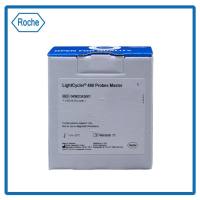The cytosolic calcium concentration, (Ca2+ )c , represents in many types of cells a versatile regulatory system involved in several signal transduction pathways of cell activation (1 ), and is tightly regulated in human platelets. Under basal conditions, platelets maintain the (Ca2+ )c at about 80 nM by actively sequestering calcium into the intracellular stores or by extruding it into the extracellular medium. The binding of specific agonists to their receptors induces a rapid increase of the (Ca2+ )c , which can reach the micromolar range, depending on the type and the dose of agonist used. This effect is owing to Ca2+ influx from the extracellular medium to the cytosol and to the release of Ca2+ from internal stores (1 ,2 ) This latter effect is mediated by a phospholipase C-dependent mechanism; phospholipase C hydrolyzes plasma membrane phosphati-dylinositol 4,5-bisphosphate and produces diacylglycerol and inositol 1,4,5-trisphosphate (3 ). Inositol 1,4,5-trisphosphate causes the release of Ca2+ from the dense tubular system by interacting with a specific receptor that behaves as a Ca2+ channel by Itself. Much less is known about the Ca2 influx across the plasma membrane Several studies suggested a role for membrane glycoproteins, such as glycoprotein IIb–IIIa complex (GPIIb–IIIa) in controlling calcium homeostasis in platelets. GPIIb–IIIa is the platelet receptor for fibrinogen and other adhesive proteins and belongs to the integrin superfamily (4 ). It represents a high affinity binding site for Ca2+ in the plasma membrane (5 ) and may regulate the Ca2+ homeostasis in human platelets (6 ), by acting as a channel by itself (7 ) or by interacting with a closely adjacent channel (8 ). Moreover, some authors reported a role for GPIIb–IIIa occupation in the regulation of phospholipase C activation (9 ).






